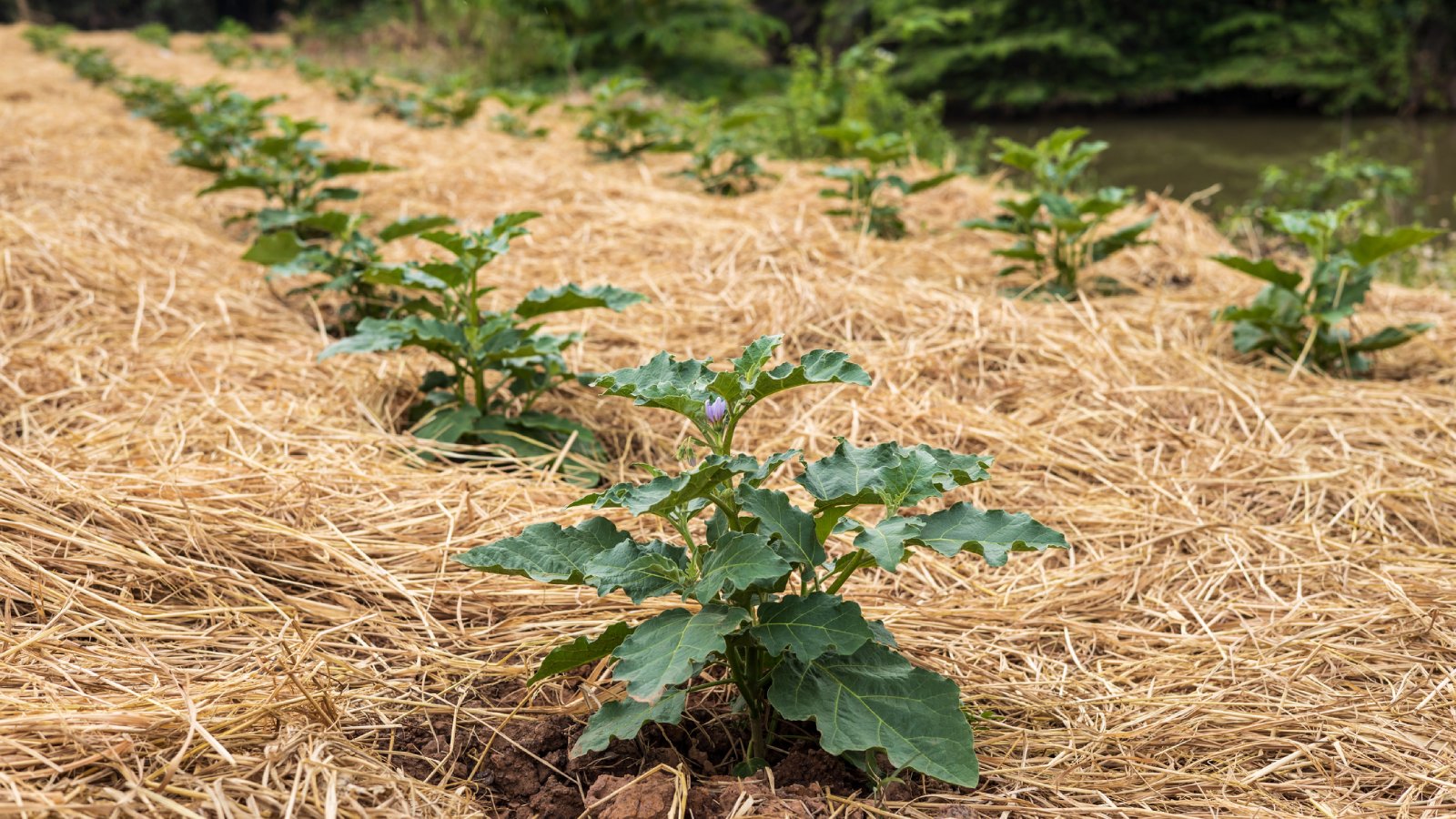Ruth Stout Method Of Low-Maintenance No-Till Gardening
If you’re a busy gardener, the Ruth Stout method will seriously trim back your work time. It's not flashy, but it's a highly effective way to no-till garden.


If you are a lazy gardener like me, you might benefit from the Ruth Stout method of no-till gardening. Ruth Stout was a savvy gardener who decided she wasn’t going to till her land prior to growing her garden. She pioneered the perpetual mulch concept which enriched the soil and produced amazing results with less work. She was called the “ Mulch Queen” and wrote numerous books on the topic.
Who Was Ruth Stout?
Ruth was born in the U.S. in 1884 and realized as a young woman that traditional garden methods were a waste of time and effort. In 1930, she and her husband moved to a farm in Connecticut. According to gardening lore, she was frustrated that the man they hired to plow the fields every year was late. Noticing her asparagus poking up, she wondered if she didn’t have to plow to grow that, why plow at all? This started her lifelong practice of covering the land in hay mulch. She actually used spoiled hay that wasn’t good for anything else. The results were fewer weeds, more moisture conservation, and the hay slowly released nutrients for her plants as it broke down.
What Is the Ruth Stout Method?
If you observe a lush forest with trees and understory plants, consider the soil. It is made up of layers upon layers of dropped organic material. The soil is warmer in winter, cooler in summer, nutrient-dense, and keeps moist. Nature’s natural layering in this manner might have inspired Ruth. The Ruth Stout garden starts with a layer of hay. Add to this annually. The results are a garden with no tilling needed, less water and fertilizer required, and fewer weeds. Her method inspired many well-known garden experts and is the basis for many other planting strategies.
Pros and Cons of the Ruth Stout Method
If you are a gardener who is fastidious about the tidiness of your landscape, this might not be for you. While it requires little labor and saves on resources, Ruth Stout gardening is indeed messy in appearance initially. But once vegetables begin to fill in, the appearance is much more aesthetic. Another great thing about it is that it doesn’t necessarily require hay. You can layer any organic matter and get a similar result. Leaf litter, herbaceous plant trimmings, dried lawn clippings all work well as sustainable mulch. Overwhelmingly, the Ruth Stout method of gardening saves time and energy. No need to dig, just layer and plant.
How to Create a Ruth Stout Garden
While this method takes little time and no special equipment, it should take a little planning for best results. If your soil is clay, it is best to till it before laying mulch. If you have sandy soil, incorporate some organic amendments. Next, lay your hay in late summer or fall. This will allow the hay or other organic material to break down a bit and will warm the soil earlier in spring. You can use hay or straw, but hay is higher in nitrogen and breaks down faster, while straw is coarse, lingers, and has more carbon than nitrogen.
Spread an 8 inch (20 cm) layer which will shrink by half by spring. This is thick enough to suppress weeds while still allowing seeded plants to grow. Ruth sprinkled seeds and then just used her hand to pat the mulch and let the seed fall down to the soil.
Maintaining a Ruth Stout Garden
Like any garden, the plants will need occasional watering in hot summers. But only occasionally when the soil is dry under the mulch. Sprinkle some time release fertilizer over the mulch and water that in. Once the plants are large enough, sprinkle more mulch around them to keep the soil moist and discourage weeds. Once each plant is harvested, just let it die in place and compost it into the mulch and soil. Cover it over with another 8 inches (20 cm) of mulch and wait for spring.
Gardening tips, videos, info and more delivered right to your inbox!
Sign up for the Gardening Know How newsletter today and receive a free copy of our e-book "How to Grow Delicious Tomatoes".
What to Grow
Because the mulch retains heat, you can plant late season crops with great success. Kale, collards, and other cool season crops will thrive. You can also grow most of the standard garden vegetables, such as:
- Corn
- Lettuces
- Beans
- Onions
- Potatoes
- Squash
- Asparagus
- Garlic
- Tomatoes
- Strawberries
- Tomatoes
- Cabbage
- Turnips
- Peas

Bonnie Grant is a professional landscaper with a Certification in Urban Gardening. She has been gardening and writing for 15 years. A former professional chef, she has a passion for edible landscaping.
-
 Looking For Plants To Give You The Soft And Fuzzies? Try These 5 Fuzzy Leaf Plant Options
Looking For Plants To Give You The Soft And Fuzzies? Try These 5 Fuzzy Leaf Plant OptionsLovers of texture, drama, silver foliage and tactile plants will adore these special sensory garden additions. These fuzzy leaf plant options will leave you all aglow
By Susan Albert
-
 Get Ready For A Summer Of Hummers! Grow These Full Sun Hummingbird Plants and Flowers
Get Ready For A Summer Of Hummers! Grow These Full Sun Hummingbird Plants and FlowersIf you’re lucky enough to enjoy a sunny backyard, make sure you are maxing out on your pollinator opportunities and grow these full sun hummingbird plants and flowers
By Tonya Barnett